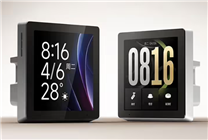Huawei Introduces eSIM Functionality in Older Models with HarmonyOS 6.0 Update
Summary:
- Huawei’s update to HarmonyOS 6.0 includes a built-in eSIM application, expanding connectivity options.
- Key models such as the Huawei Mate 40 Pro have already integrated eSIM technology.
- The SkyTong Go WeChat applet will support eSIM services, enhancing user convenience.
Huawei continues to innovate by updating its older smartphone models to HarmonyOS 6.0, recently introduced with an essential feature—an embedded SIM (eSIM) application. This advancement aims to ease the process of telecommunications management for users with various connectivity needs.
eSIM Technology Overview
eSIM technology replaces the traditional physical SIM card with a virtual one. This not only saves physical space within the device but also allows users to manage multiple mobile numbers through a single card slot. The ability to switch between telecommunications suppliers adds a layer of flexibility, reducing costs and enhancing user convenience. The eSIM operates similarly to a physical SIM in terms of functionality, indicating a seamless transition for users.
Compatibility with Older Models
Although the precise capabilities of the newly introduced eSIM application remain unclear, Huawei’s official resources indicate that several models, including the Huawei Mate 40 Pro (overseas version), are compatible with eSIM technology. This expands Huawei’s commitment to supporting its legacy devices with cutting-edge features, ensuring that existing customers continue to receive value from their investments.
Future Prospects with SkyTong Go
In conjunction with the HarmonyOS 6.0 update, Huawei has announced that the SkyTong Go WeChat applet will also feature eSIM support. This app will enable users to add eSIM devices, providing a more integrated approach to managing one’s digital life. Reports suggest that by the third quarter of the year, users will be able to add these devices seamlessly, reflecting Huawei’s dedication to enhancing the user experience.
Conclusion
With the integration of eSIM capabilities in its older models via the HarmonyOS 6.0 update, Huawei is paving the way for enhanced communication solutions. As users adapt to the convenience of virtual SIM technology, they can expect a more flexible, cost-effective alternative to traditional SIM cards. This strategic move not only solidifies Huawei’s position in the smartphone market but also signifies a shift towards more innovative, user-centered technology solutions.
As the rollout progresses, users can look forward to further enhancements that align with modern telecommunications trends, marking a significant milestone in Huawei’s commitment to innovation.







